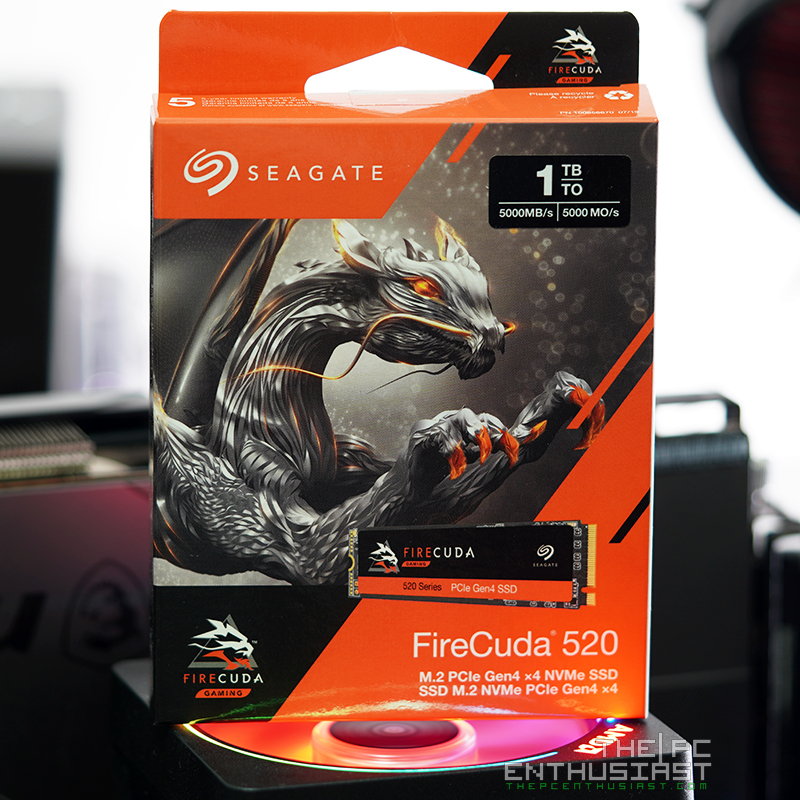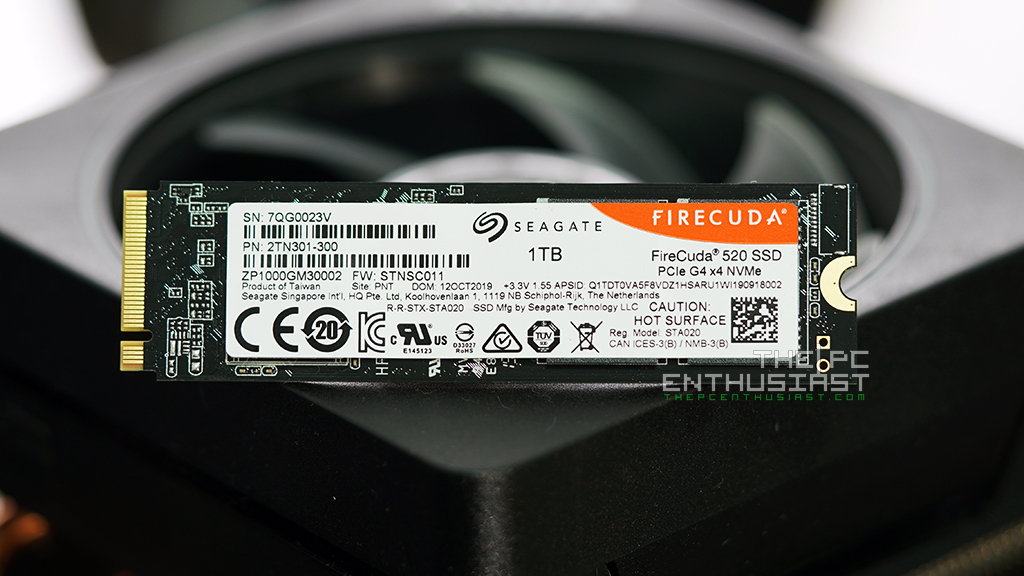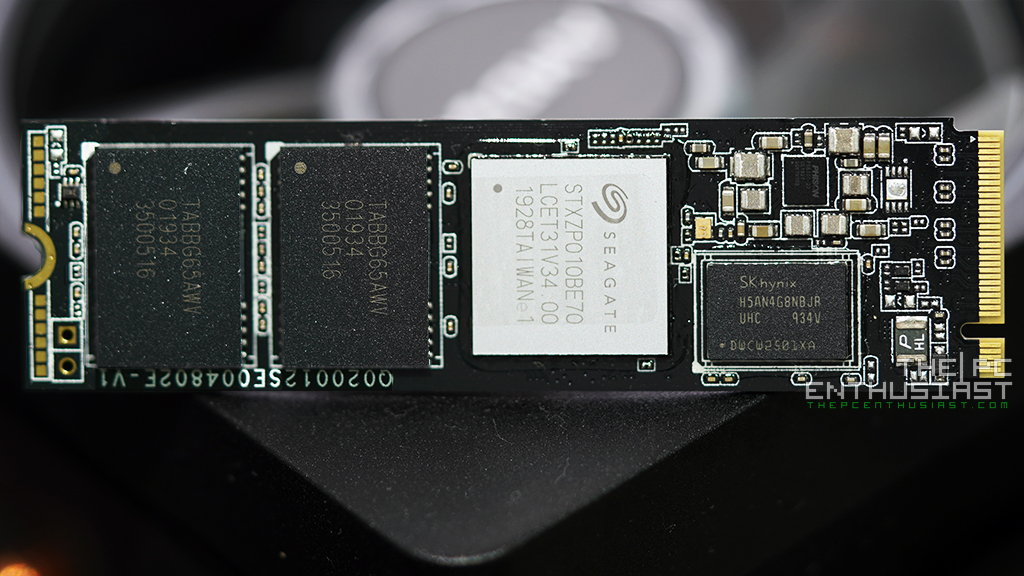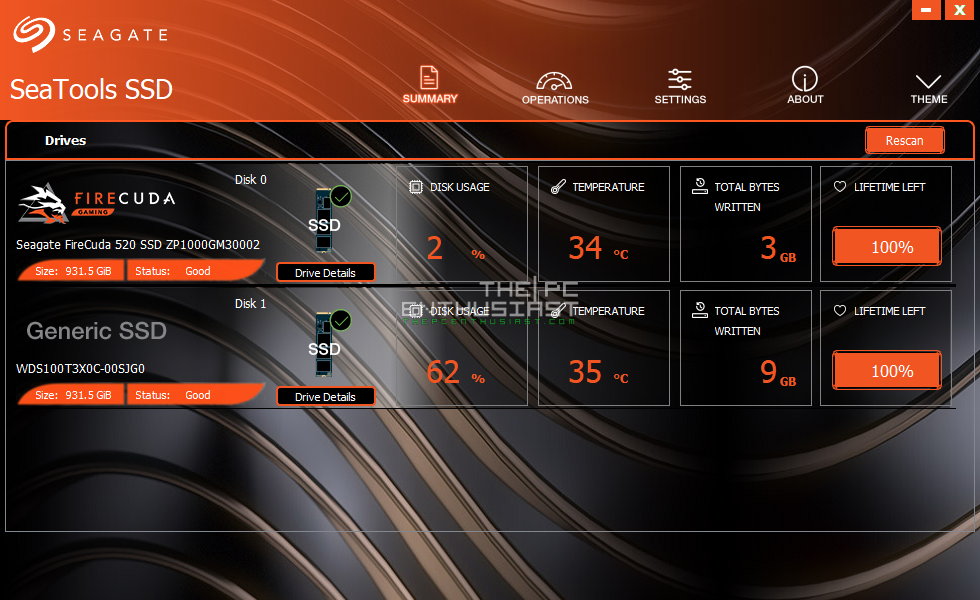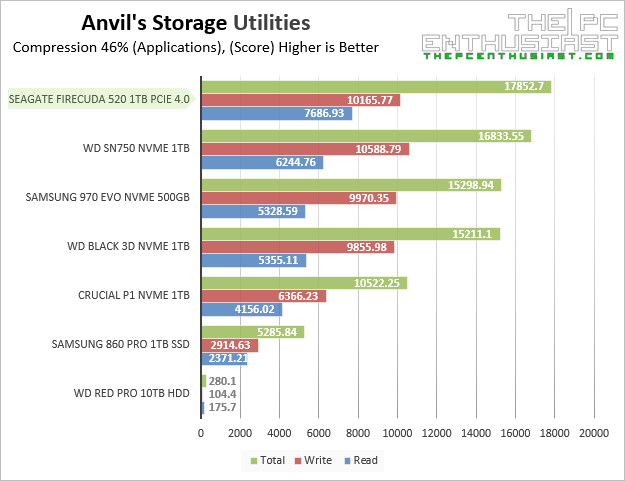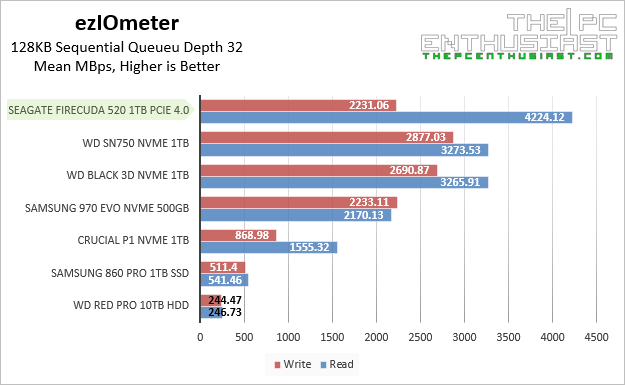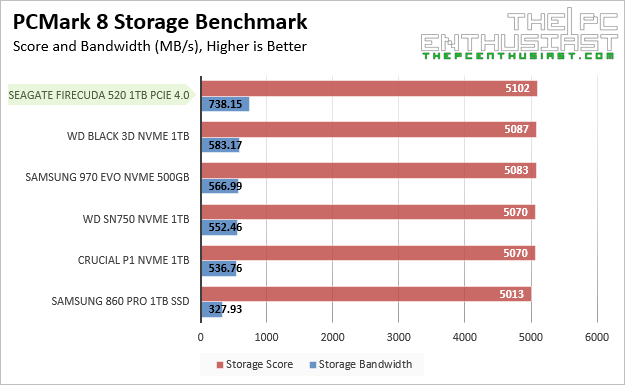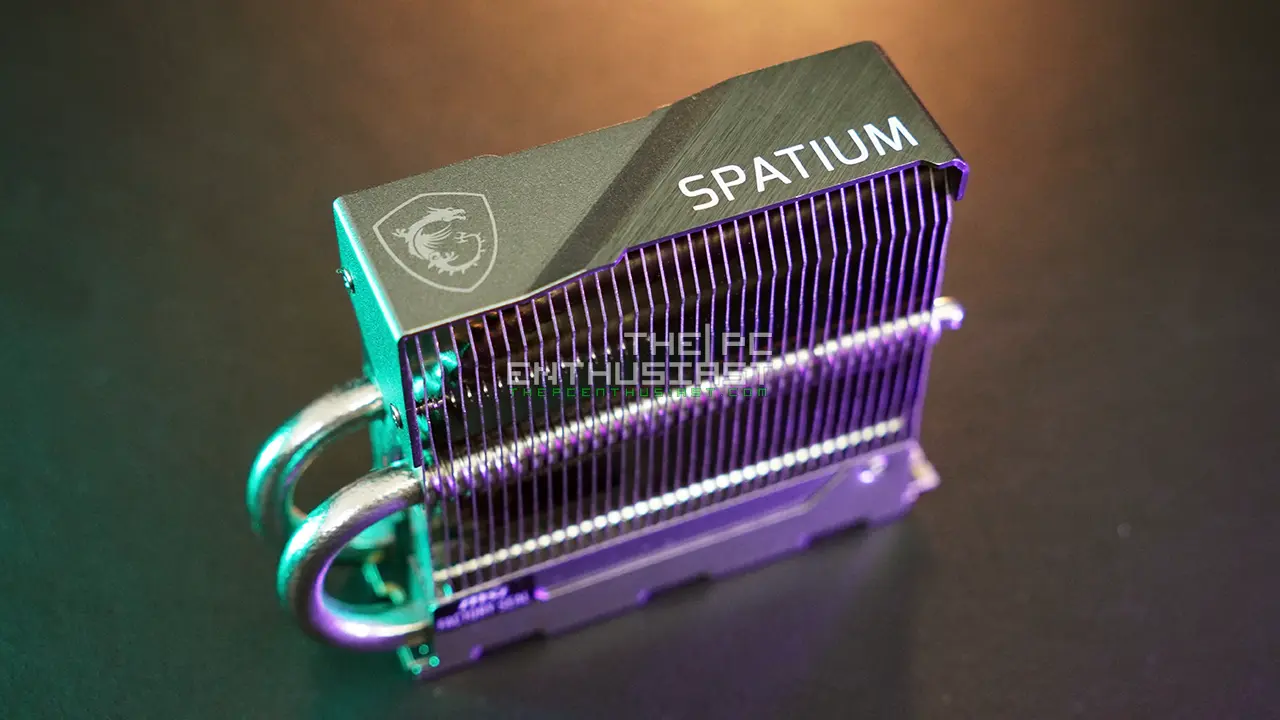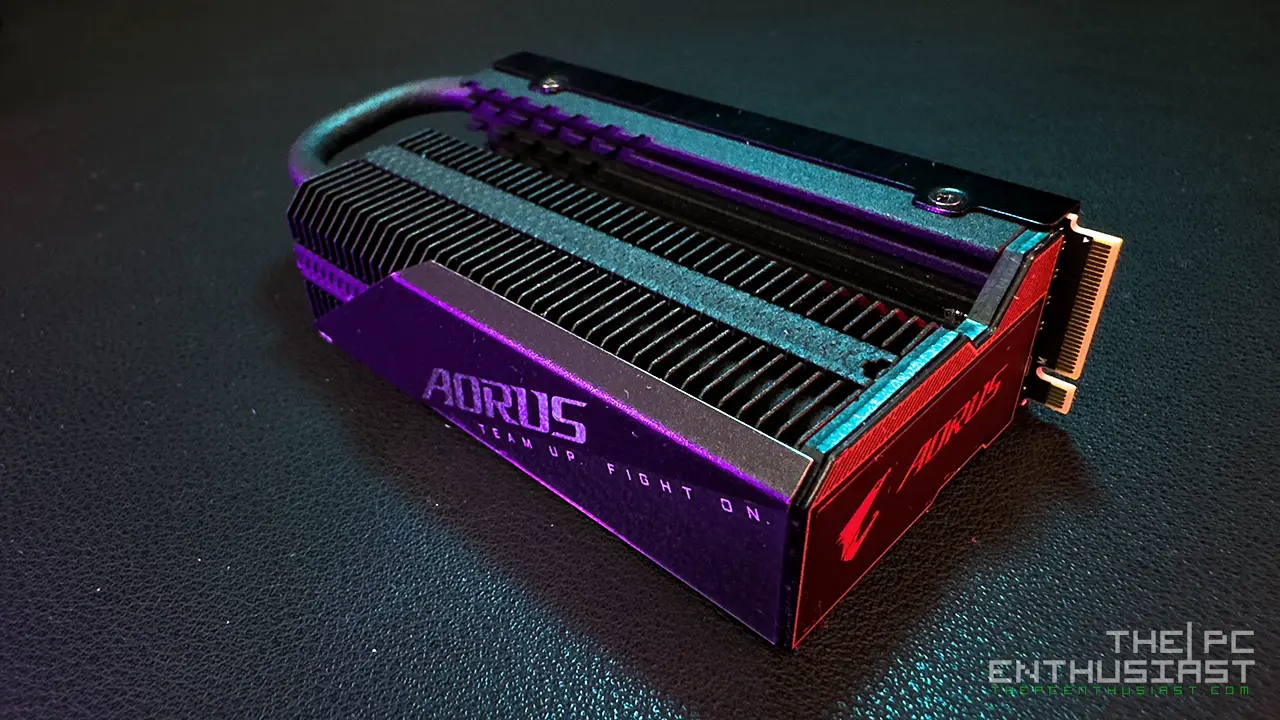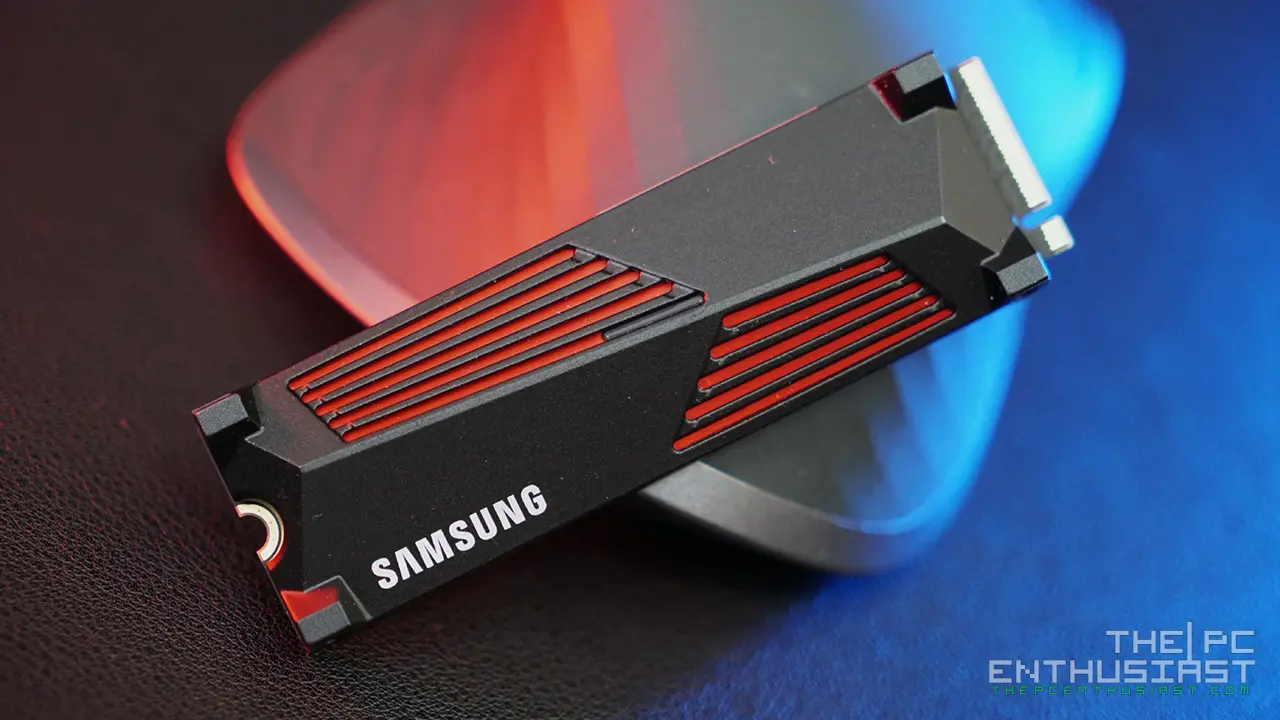With the release of AMD’s X570 chipset supporting PCIe Gen4 x4 interface, there are several M.2 NVMe SSDs available in the market that would be able to take advantage of the said interface. One of them is the Seagate FireCuda 520 SSD, which was released last month. It’s not the first, but it’s one of the few M.2 NVMe SSD to utilize the PCIe Gen 4 interface. Today we are going to check out and review the Seagate FireCuda 520 1TB M.2 PCIe 4.0 NVMe SSD and see how fast this drive is. If you have an X570 motherboard powered by a 3rd Gen Ryzen CPU (or planning to get one) and you want a storage drive that could take advantage of the PCIe Gen 4 interface, then please continue reading our Seagate FireCuda 520 SSD review below and learn more.
Seagate FireCuda 520 PCIe Gen4 NVMe SSD Review
The FireCuda 520 is Seagate’s flagship NVMe SSD that is based on the latest PCIe 4.0 interface, featuring a 96-layer 3D NAND and a Phison E16 controller. It features a sequential read/write speed of up to 5,000MB/s and 4,400MB/s respectively; or a random read/write speeds of up to 760K and 700K IOPS respectively. It’s basically 45% faster than Gen3-based M.2 NVMe SSDs and up to 9x faster in sequential reads than the typical SATA SSDs.
The Phison E16 controller is fully aligned with AMD X570 chipset motherboards and is able to reach up to 5GB/s reads and 4.4 GB/s writes. But you do need the latest X570 motherboard powered with the 3rd Gen Ryzen CPU. Otherwise, if the requirement is not met, or if installed on an Intel-based system; the FireCuda 520 will only run around half the speed due to the limit of the PCIe Gen 3 interface.
Currently, the FireCuda 520 is available in 500GB, 1TB and 2TB capacities with an MSRP of $124.99, $249.99 and $429.99 respectively. Seagate is also offering up to 5 years of limited warranty for the said drive. Below are the complete specifications of the FireCuda 520; after that let’s take a closer look and see the performance of this drive.
Seagate FireCuda 520 NMVe SSD Specifications
Seagate FireCuda 520 Packaging and Closer Look
The FireCuda 520 comes in a small box, a typical packaging of an M.2 NVMe SSD; with Seagate’s dragon mascot at the front portion of the box. Basically, FireCuda is Seagate’s “faster” lineup of storage drives. It started with the FireCuda SSHD series, and now they have PCIe Gen 4 M.2 NVMe SSDs.
The Barracuda (Pro) lineup is basically Seagate’s mechanical hard drives and SSDs for most consumers; while the Iron Wolf and Skyhawk are hard drives specifically for NAS and surveillance use respectively.
Above are the front and back view of the FireCuda 520. It’s a good thing that Seagate decided to use a black PCB for their 520 series, because the FireCuda 510 has a blue PCB. And aesthetically speaking, a blue PCB doesn’t always look good when installed on a motherboard / system. Most PC gamers and enthusiasts would definitely go for a black PCB for aesthetics purposes.
The FireCuda 520 is also a double-sided SSD, drive; meaning that there are components soldered on both sides of the drive. In this case, there are four NAND chips installed in the 1TB FireCuda 520. Two on the front together with the controller and the DRAM, while the other two are on the back of the PCB.
Most M.2 NVMe SSDs, like the Samsung 970 or WD Black SN750 series have their components installed only on one side of the PCB. This isn’t really a big deal, but it is worth mentioning it for clearance purposes.
Removing the stickers on the front portion of the FireCuda 520 reveals some of the components. You can see from the photo above (right to left) are the Skhynix H5AN4G8NBJR DDR4 memory cache, the Seagate STXZP010BE70 controller and two Toshiba 19nm 96-layer BiCS4 TLC 3D-NAND TABBG65AWV. The other two NAND chips are located at the back, each chips with a 256GB capacity for a total of 1TB.
Seagate SeaTools SSD Toolbox
Seagate does offer an optional SSD toolbox called SeaTools. With SeaTools you can check some the status of the FireCuda drive; like its disk usage, temperature, total bytes written or lifetime.
There are other useful tools that come with the SeaTools, like updating the drive’s firmware (though you rarely need to update its firmware), creating a bootable drive, erasing the drive and other customization or tweaks.
FireCuda 520 Review – Test Setup
Since we can only fully take advantage of the FireCuda 520’s speed on an X570 system. Our test setup for this review is a bit different from the one we used in our other reviews. This time I am using an MSI MEG X570 ACE motherboard powered with an AMD Ryzen 7 3700X CPU. Below are the rest of the system’s specifications:
Operating System: Windows 10 Pro 64bit v.1909
Motherboard: MSI MEG X570 ACE
Processor: AMD Ryzen 7 3700X
CPU Cooler: Wraith Prism Cooler
Memory: Crucial Ballistix Elite 16GB DDR-4000
Graphics card: MSI Radeon RX 5700 XT Gaming X
Storage Drives: WD Black SN750 NVMe SSD 1TB
Power Supply: Enermax MaxTytan 1250W 80 PLUS Titanium certified
Seagate FireCuda 520 Real World Copy Test
Before I show you some numbers, let me first show you a real world copy test and see just how fast this drive can transfer a file.
I copied the Final Fantasy Benchmark installer from the WD Black SN750 to the FireCuda 520. The compressed file is 3.65GB in size, and it only took less than a second to copy the whole thing. I think it already reached the maximum read speed of the WD SN750, bottlenecking the copy process and it might have been even faster if the file was copied or transferred from another PCIe Gen 4 M.2 NVMe SSD.
Now let’s see some numbers…
Seagate FireCuda 520 AJA Benchmark Results
In AJA system test, we can see that the FireCuda 520 is significantly faster in both read and write speeds compared to the other M.2 NVMe Gen3-based SSDs in the graphs. Read speed somehow falls short in this test, but the write speed isn’t that far from the advertised specs.
Seagate FireCuda 520 Anvil’s Storage Benchmark Results
I’m not entirely sure why the write speed is surprisingly slow in Anvil’s storage tests, perhaps there might be a configuration that I missed. But overall, we can see that the performance of the FireCuda 520 is still above compared to the other NVMe SSD drives in the graph.
Seagate FireCuda 520 ATTO Disk Benchmark Results
ATTO disk benchmark usually reflects the advertised speed of a storage drive. Here we can see that the read speed is around 5.2 GB/s, a bit higher from the advertised 5GBs sequential read speed. Meanwhile the write speed is around 4.1 GB/s, which is just 300MB/s short of the advertised speeds. Those numbers are still impressive as they are very near the advertised speeds.
Seagate FireCuda 520 AS SSD Benchmark Results
Again, in AS SSD benchmark results, we can see that the Seagate FireCuda 520 takes the lead; breaking the 3GB/s speed barrier.
Seagate FireCuda 520 CrystalDiskMark Benchmark Results
In CrystalDiskMark sequential benchmarks, we can see that the FireCuda 520 is on spot with its advertised speeds. Meanwhile, its 4K random benchmark is similar with the one we got from AS SSD tests.
Seagate FireCuda 520 ezIOmeter Benchmark Results
This test got me head-scratching a bit, its 4KB random tests were normal and as expected. However, the write speed is unexpectedly slower on the 128KB sequential tests. I did the test several times just to make sure there wasn’t any glitch; and the results were very consistent.
This is similar with the results I got in the Anvil’s storage test, particularly with the compression 0-fill test, where the write speed is unexpectedly and surprisingly slow. Although, it’s worth mentioning that both the Anvil and ezIOmeter are very old benchmark tools. So, some of its testing methodology may be obsolete or no longer suited for the latest PCIe Gen 4 SSD drives.
Seagate FireCuda 520 PCMark 8 Storage Benchmark Results
Finally let’s see how the FireCuda 520 performs on the PCMark 8 storage test. “The PCMark 8 Storage benchmark tests the performance of SSDs, HDDs and hybrid drives with traces recorded from Adobe Creative Suite, Microsoft Office and a selection of popular games. It can test the system drive or any other recognized storage device, including local external drives. The PCMark 8 Storage benchmark also highlights real-world performance differences between storage devices unlike synthetic storage tests.”
As you can see from the results above, the Seagate FireCuda 520 1TB has a significantly higher or faster storage bandwidth score. That’s a 27% increase from the WD Black 3D PCIe Gen3 NVMe SSD we tested before. Overall storage score is higher as well.
Now that we have seen the numbers and its performance, it’s time to conclude this review. And let’s add the other crucial deciding factor – its price.
Seagate FireCuda 520 M.2 PCIe 4.0 NVMe SSD Review Conclusion
Seagate’s FireCuda 520 SSD is blazing fast! Its sequential read speed could reach up to 5,000 MB/s and a sequential write speed of around 4,200 MB/s. That’s faster than any PCIe Gen 3 NVMe SSD in the market. However, speed isn’t everything, especially for paying consumers. While the FireCuda 520 is indeed fast, it is also a bit pricey, with the 1TB capacity currently retailing for $249 USD (MSRP).
The FireCuda 520 doesn’t have a lot of competition at this time. And the only other M.2 PCIe Gen4 NVMe SSDs available in the market are the Corsair MP600, Aorus NVMe Gen4 SSD and the Sabrent Rocket NVMe 4.0. That’s good news for the FireCuda 520, since it will only need to compete with three other Gen4 NVMe SSDs in the market. However, the FireCuda 520 is currently priced higher (at the time I published this review) than its competition. Seagate may need to lower its price to make the FireCuda 520 more attractive than the competition.
In terms of overall experience, the FireCuda 520 is noticeably faster especially when transferring files. It’s definitely faster overall when compared to a SATA SSD. However, you may not feel a significant performance difference in normal desktop operation when compared to PCIe Gen3 NVMe SSDs, depending on the scenario or tasks. But when transferring files or working with large file sizes, it is where you will see the benefit of a Gen4 NVMe SSD.
When it comes to gaming, I think the FireCuda 520 is a bit overkill. I mean, games load fast on SSDs already, and even faster with Gen3 NVMe SSDs. So, I don’t think it’s currently wise to invest on a FireCuda 520 and make it as your primarily and exclusive game drive only. Not unless, money is no object for you and you simply want the fastest drive around.
One thing to remember though, the FireCuda 520 or any Gen4 NVMe SSDs in general requires an X570 motherboard powered with a 3rd Gen AMD Ryzen CPU. You will not be able to take advantage of the speed if installed in other system or motherboard. PCIe 4.0 is currently only available in X570 motherboards, so for Intel users, you will have to wait for Intel to release a new chipset or system that would support the latest PCIe 4.0 interface. The FireCuda 520 will work on existing PCIe 3.0 M.2 slots, but the speed will be significantly slower, simply not worth at all.
Finally, the Seagate FireCuda 520 is an impressive drive and it’s simply an undeniably fast drive. It’s a great drive for the latest AMD X570 systems, and if you deal with large files, you would definitely benefit from the speed of this drive. You can grab one now if you want the fastest drive around, but I expect that prices for these Gen4 NVMe SSDs will be better on 2020.
Seagate FireCuda 520 PCIe Gen 4 M.2 NVMe SSD latest pricing and availability:
For US: Available on Amazon.com here
For UK: Available on Amazon UK here



